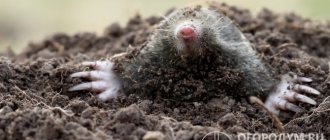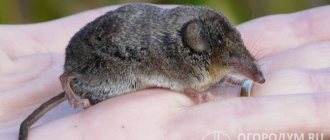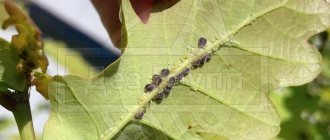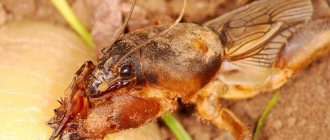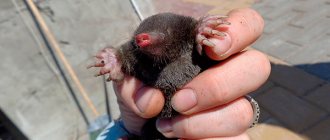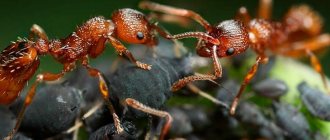- Biological characteristics of aphids
- Life cycle of aphids: or why does it reproduce so quickly?
- Main types of aphids and risk groups for plants
- Symptoms of damage
- Prevention and control measures for aphids Chemical preparations
- Contact drugs
- Intestinal drugs
- Systemic drugs
- Biological drugs
How to distinguish aphids in the garden
Aphids are small translucent insects, the average size is 0.5-6 mm. The body is soft, covered with various outgrowths, tubercles, fluff or hairs of varying lengths. The shape varies from semicircular to oblong. The color is very diverse: from light beige to black. Most often it matches the color of the nutrient substrate on which insects accumulate and feed. On the head there are antennae, on which the main sensory organs are located. Depending on the phase of the life cycle, the middle segment of the chest may have thin transparent wings. The oral apparatus is sucking. With the help of a proboscis, the insect pierces the outer tissues of the plant, most often stems or leaves, and feeds on its juices. In some species, the length of the proboscis can exceed the body size several times.
Note: Most species lead a colonial lifestyle.
Biological characteristics of aphids
Aphids are small insects (3-7 millimeters) with a green or black body color.
The reason for the harm is that the aphid, by its nature, has an unpaired outgrowth at the end of the front part of the body (proboscis), with the help of which the insect pierces the leaf of the plant and sucks out the vital juice.
Reasons for the appearance of aphids on a personal plot
At the end of autumn, the fertilized female lays eggs on trees and herbaceous vegetation close to the soil cover, where the clutch successfully overwinters. In the spring, wingless individuals emerge from it - female founders, who give rise to a new colony.
Also, the reason for the appearance of aphids can be:
- purchased seedling soil that contained aphid eggs;
- purchasing infected seedlings;
- natural transfer of winged individuals by wind or animals.
Attention! The spread of aphid eggs can be facilitated by ants, who carefully carry them to their anthills for the winter, and in the spring they spread them to surrounding plants.
Types of aphids affecting garden crops
About 5,000 species are known in the world, of which 1.5 thousand live in the European part. For the most part, aphids are omnivorous, but there are species that only taste certain types of cultivated plants.
Most often in the garden you can find the following representatives:
Melon (cotton) aphid
Polyphagous insect. It settles on melons, as well as on peppers, eggplants, tomatoes and melons. Among flower crops, he prefers chrysanthemums and Kalanchoe. Peak activity occurs in mid-summer.
Cherry aphid
Lives in the southern regions of the country. It affects young shoots and leaves of cherries and cherries.
Pea aphid
Damages legumes. Active from spring until harvest.
Cabbage aphid
Harmful to all types of cabbage, as well as radishes, radishes and turnips. Distributed everywhere.
Potato aphid
It feeds on the juice of melons, lettuce, peppers, tomatoes, potatoes, eggplants and some ornamental crops.
Apple green aphid
Distributed everywhere, attacks apple, pear, hawthorn, and quince. They form huge colonies.
Redcurrant aphid
Found in all currant growing regions. Affects black, red and white currants.
Gooseberry shoot aphid
Distributed everywhere. It affects gooseberries and all types of currants.
Red gall aphid
Most often it affects apple and currant leaves. During their life, burgundy or yellow swellings appear on the leaves - galls.
Greenhouse green (peach, tobacco) aphid
Affects more than 50 types of crops. Most often it settles on potatoes, peppers, tomatoes, dill, lettuce and parsley. Among the trees he prefers are peach and almond. Flowers include tulip, gerbera, freesia and chrysanthemums.
Beet (bean) aphid
Harmful to beets, potatoes, poppies, legumes, jasmine.
rose aphid
Distributed everywhere. It affects rosaceous plants: cherry, apple, rose hips, roses and garden strawberries.
Aphid migration methods
Aphids are highly fertile. During its existence, one female founder gives rise to several generations, which reproduce tens of thousands of pests per season. When the colony grows too actively or when the host plant changes, winged individuals are born that are capable of traveling vast distances and founding new colonies.
Types of aphids, what they look like and what harm they cause
The family of these insects includes several thousand species. All of them feed on plant juices, piercing leaves with their proboscis. The adult size barely reaches a few millimeters. The color of the soft cover can be green, brown, black, or brick.
Each species has both wingless and winged representatives. The first are born from virgin females, the second after fertilization. Certain conditions contribute to the appearance of individuals with wings, for example, rapid colony growth and the need for relocation.
Appearance
The ability of aphids to reproduce through parthenogenesis over several generations contributes to the rapid infection of the entire area.
Description of varieties
About 1.5 thousand species of these pests are found in Russia. They differ not only in body color, but also in their preferences for certain plants.
- The leaf gall aphid received this name because after its punctures, peculiar spherical swellings are formed on the leaves - galls. Yellow-green insects prefer to settle on currant bushes.
- Beet aphids are brown, emerald or black in color. Affects beets, legumes, potatoes, poppy, jasmine, sunflower.
- White or brown aphids, settling on tomato seedlings, often cause the death of young plants.
- Cucumber is considered the most prolific. A green insect with black antennae and legs harms not only cucumbers. It can be found on beets, melons, cotton, citrus fruits, and tobacco.
- Cabbage aphids grow up to 4 mm. The grass-colored pest attacks beds with radishes, radishes, cabbage and other cruciferous vegetables.
- A small, only 2.5 mm light green insect that lives on raspberries, blackberries, and roses is the raspberry aphid.
- Potato pest harms beets, tomatoes, cabbage, and potatoes. Insects grow up to 4 mm and are red or green in color.
- Peach aphids attack not only fruit trees, but also eggplants, cabbage, potatoes, radishes, cucumbers, parsley and dill.
When gardeners are faced with the question of how to get rid of black aphids, they need to understand that we are not talking about just one species. This is the name given to all insects that are black and dark blue in color.
Damage caused and dangers
Aphids are, first of all, dangerous due to their rapid reproduction. Colonies of pests that attack young seedlings can ruin the standing crop. The main damage from their livelihoods is as follows:
- Young plants begin to die from a lack of life-giving juice sucked out by pests.
- Leaf deformation occurs.
- The insect is a carrier of about 100 phytopathogenic viruses.
- White aphids that settle on tomato seedlings begin to feed close to the ground, which leads to the death of the entire plant.
Signs of aphids
In the process of life, aphids damage the soft tissues of the plant and feed on their sap, which causes:
- deformation of leaves and young shoots;
- discoloration of damaged tissues;
- the appearance of sticky liquid on the plant;
- underdevelopment of buds;
- dying off of flower stalks.

